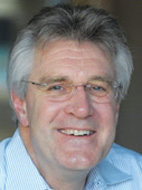- By Bob Felton
- InTech
Summary

Editor’s Note: ISA continues its tradition of honoring leaders throughout the automation profession. The Automation Founders Circle features the personal stories of outstanding automation professionals who carry on the legacy of industry pioneers and ISA founders Albert F. Sperry, innovator and first ISA president (1946), and Arnold O. Beckmann, inventor, founder of Beckman Instruments, and ISA president (1952).
Shaping tomorrow's communications technology
For leading a global effort to solve the skills gap in automation control systems through new development and education in industrial data communications, this year's Excellence in Leadership Award goes to Don Bartusiak, PhD, chief engineer for process control at ExxonMobil Research and Engineering.

In 2016, building upon research that he had done at ExxonMobil, Bartusiak helped launch the Open Process Automation Forum, with the purpose of developing a secure and standards-based control architecture that meets the technical and business requirements of a broad range of processes.
Though his career has been devoted to developing and implementing forward-looking technology, he attaches no less importance to mentoring young engineers and technologists. As he said when he was inducted into the Control Process Automation Hall of Fame, "My current position has two main components: to set a very forward-looking technical strategy that will make ours the best company in the world and to foster the next generation of technologists. The way Exxon Chemical's engineering group was set up, people on the technical ladder have to also train and mentor the less experienced. It's the way we learned to work. We're expected to impart our knowledge, to train and develop."
Bartusiak is a former national director of the Computing and Systems Technology (CAST) division of the American Institute of Chemical Engineers (AIChE), process control programming chairman for the Ethylene Producers Committee, and a member of Technical Committee 6.1 for Chemical Process Control in the International Federation of Automatic Control (IFAC). Currently, he is a managing director in the Standards and Practices Board of ISA and cochair of the Open Process Automation Forum of The Open Group. In 2011, he received the Computing Practice Award from the CAST division of AIChE. He was inducted into Control Engineering's Automation Hall of Fame in 2015, and in 2016 was named to Smart Industry's Top 50 Innovators. He has published 10 journal articles, addressing topics ranging from development of nonlinear predictive controllers to technical problems associated with real-time optimization, and is the coinventor of five patents answering needs as diverse as a method for recovering carbon and iron-bearing particles to developing a system for modular distributed control.
Speeding up process analytics
For developing a new wavelength range for tunable diode laser absorption spectroscopy gas analyzers, this year's Award for Excellence in Analytical Technical Innovation goes to Peter Geiser, PhD, the chief technology officer at NEO Monitors of Norway.

Geiser is a member of the Optical Society of America (OSA) and has served as a publications reviewer for the Institute of Electrical and Electronic Engineers and OSA. Further, he served on the technical program committee for CLEO Europe 2015 on the topic of photonics in defense and security, and in the same role for the 2018 Norwegian Electro-Optics Meeting. He is the coauthor of four refereed journal papers, on topics ranging from continuous emissions monitoring using lasers to chemical detection using lasers. Additionally, he has presented more than a dozen papers at professional conferences.
The Laser-Q sensor line developed by Geiser provides real-time determination of gas concentrations in process streams by sending a light beam through the gases to a detector on the opposite side of the stream. The sensor emits a different light frequency for each gas it measures. By measuring the intensity of the light that passes through the stream, and its absorption, the sensor returns a report of the gas concentration in less than one second. The need to sample the gas, and transport the sample elsewhere, is eliminated. As NEO describes the sensor, "The single frequency characteristic of the diode laser makes it possible to measure the absorption of a particular gas using only one single absorption line, thus avoiding effectively the interference from other gases in the same gas volume, resulting in a highly accurate instrument capable of measuring very low concentration levels when required."
A unique frequency is required for each gas, and the sensor presently measures concentrations of four gases: SO2, O2, CO, and CH4. The ability to measure additional gases is in development.
In addition to measuring gas concentrations, the sensor has found application in cement manufacturing, where concentrations of explosive dust must be avoided. The improved speed of the measurement improves the speed of response to problematic conditions, enhancing safety, and the sensor is less susceptible to problems arising from exposure to dust or its accumulation, minimizing the need for service and maintenance.
Reader Feedback
We want to hear from you! Please send us your comments and questions about this topic to InTechmagazine@isa.org.


